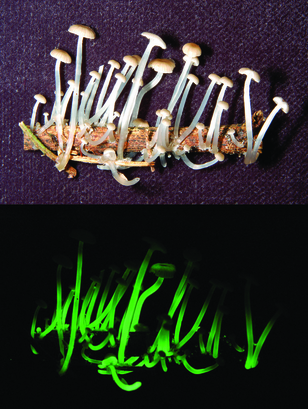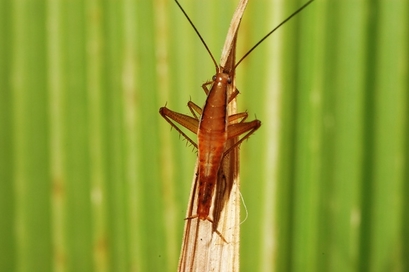A pancake-shaped batfish, a leech with titanic teeth found inside a human's nose and an iron-eating bacterium snagged spots on the Top 10 New Species list, announced Monday (May 23) by the International Institute for Species Exploration at Arizona State University and a committee of taxonomists.
This year's top 10 come from around the world, including Brazil, the Gulf of Mexico, the Mascarene Islands in the Indian Ocean, Madagascar, the North Atlantic Ocean, Oregon, Peru, the Philippines, South Africa and West Africa. [See a Gallery of Top 10 New Species]
The top 10, in no specific order, include:
- T.-rex leech: The Tyrannobdella rex leech, which sports gigantic teeth, was found in the nostril of a 9-year-old girl by Peruvian physician Renzo Arauco-Brown.
- Titanic bacterium: Found at the bottom of the ocean, at the site of the RMS Titanic shipwreck, this iron-eating bacterium named Halomonas titanicae. The bacterium sticks to steel surfaces, creating knob-like mounds of corrosion products, called "rusticles."
- Pancake batfish: The odd fish seems to hop on its thick, arm-like fins as it moves awkwardly in the water, resembling a walking bat. It was discovered in the Gulf of Mexico.
- Glowing fungus: Lighting up the top 10 is a luminescent fungus collected in São Paulo, Brazil, which have gel-coated stems that emit a bright, yellowish-green light constantly.
- Jumping cockroaches: As if cockroaches weren't creepy enough on the ground, one discovered last year has legs that are highly modified for jumping, putting its ability on par with grasshoppers. Named Saltoblattella montistabularis, the cockroach was discovered in the Mountain National Park in South Africa.
- Monitor lizard: At more than 6 feet (1.8 meters) in length, a fruit-eating monitor lizard discovered in the Philippines is the lengthiest species to make this year's top 10. The blue, black, green and gold lizard, named Varanus bitatawa, weighs in at 22 pounds and spends most of its time in trees.
- Dead antelope: A new antelope, named Philantomba walteri, was discovered in West Africa, but sadly it was already dead: it was discovered at a bushmeat market.
- Raspy cricket: Glomeremus orchidophilus made the list for its distinction of being the only pollinator of the rare and endangered orchid Angraecum cadetii in the Mascarene Archipelago in the Indian Ocean.
- Gilled mushroom: Called Psathyrella aquatica, this gilled mushroom was found in the northwestern United States submerged in the clear, cold, flowing waters of the upper Rogue River in Oregon.
- Giant orb-weaver: A giant orb-weaving spider discovered in Madagascar makes webs that can span rivers, streams and lakes. Its silk is more than two times stronger than any other known spider silk. [Gallery: Spooky Spiders]
This annual top 10 new species announcement commemorates the anniversary of the birth of Carolus Linnaeus, who initiated the modern system of plant and animal names and classifications. The list is issued annually by ASU's International Institute for Species Exploration to shine attention on biodiversity. Nominations were invited through the ASU website and also generated by institute staff and an international committee of experts.
"We can only realistically aspire to sustainable biodiversity if we first learn what species exist to begin with. Our best guess is that all species discovered since 1758 represent less than 20 percent of the kinds of plants and animals inhabiting planet Earth," Quentin Wheeler, an entomologist who directs the International Institute for Species Exploration, said in a statement.
"A reasonable estimate is that 10 million species remain to be described, named, and classified before the diversity and complexity of the biosphere is understood," he said.


No comments:
Post a Comment